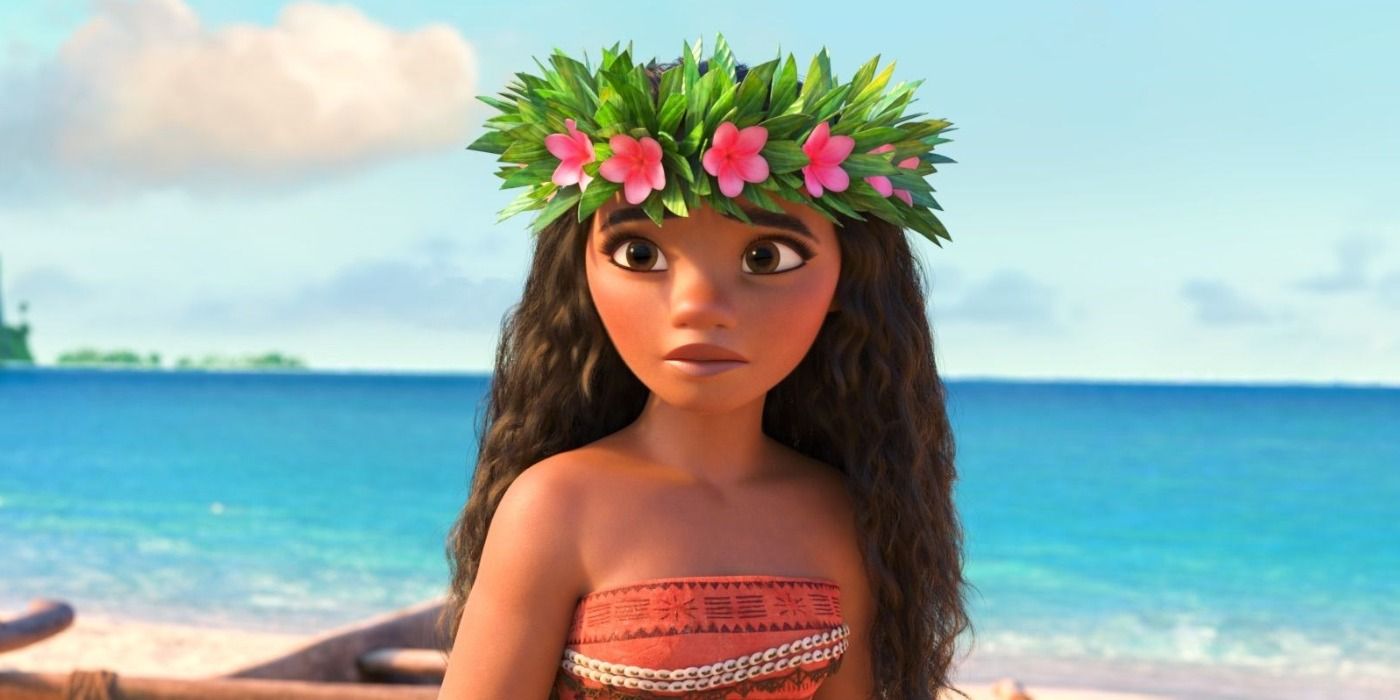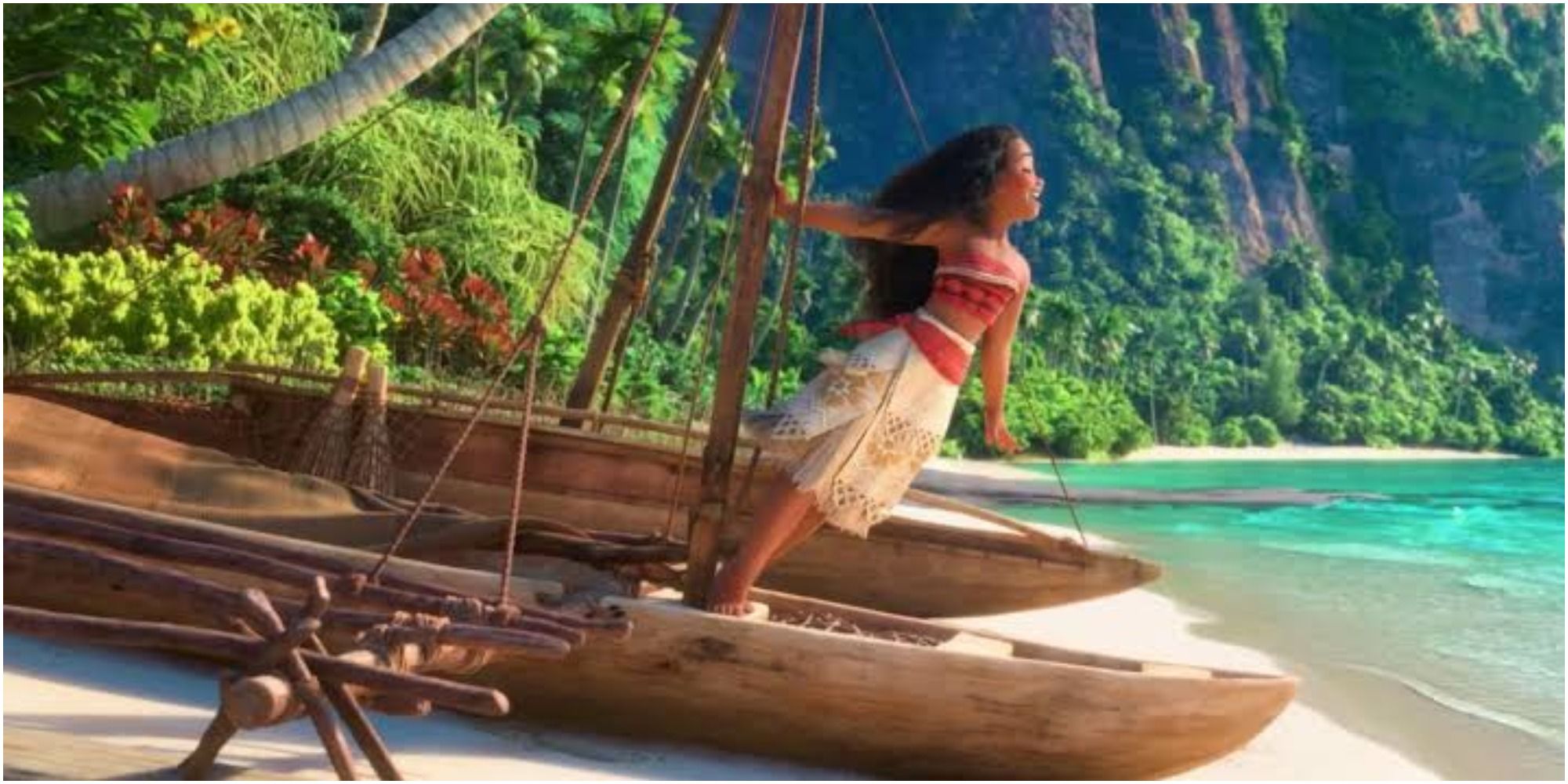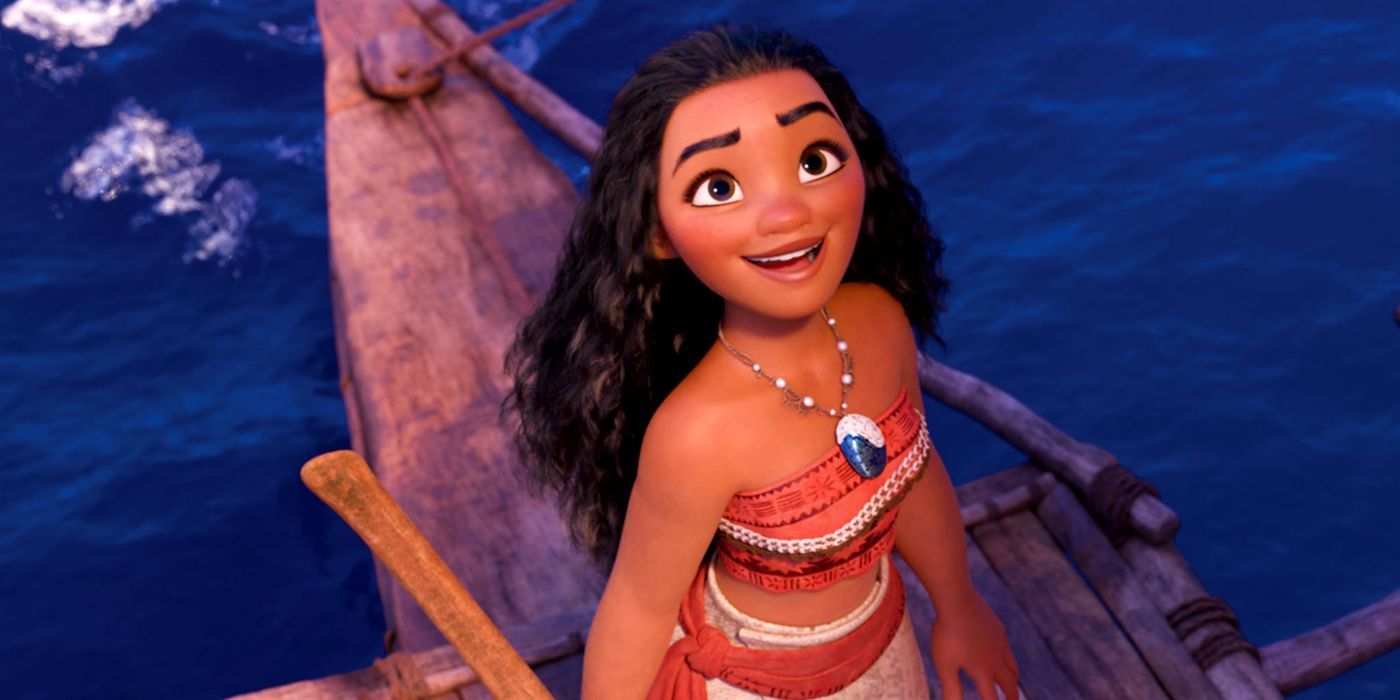Disney’s Moana takes place in the Pacific Islands in the distant past, but is there a more detailed answer to the question of where is Moana from and when Moana is set? The animated film became an instant classic as soon as it hit theaters in 2016, and will return in a Disney+ show in 2023. Moana‘s catchy tunes, stunning animation, and heartfelt story garnered rave reviews. However, it was the dynamic and vulnerable lead character, Moana, coupled with the rich and detailed setting, that really made Moana work. Moana’s story focuses heavily on culture, tradition, and generational experience, all of which have been passed down for centuries through oral traditions by the diverse peoples of Oceania — a region in the South Pacific Ocean containing more than 10,000 islands.
So, where is Moana from? The title Moana, which means ocean in multiple Polynesian languages, is a tribute to the life force that connects all of Oceania. Inspiration from the area in which the movie is set inspired Moana‘s catchy soundtrack and song list. Featuring an incredible breakout cast, Moana features the beauty of Oceania with a colorful cast of characters to guide audiences along the way. The story of Moana is also heavily influenced by Polynesian culture and folklore, further digging into where the movie is set. Moana draws inspiration from elements of various cultures throughout Oceania, but there are a few indicators that place Moana in a specific geographic location and point in time.
Where Does Moana Take Place?

Where is Moana from? The production team that worked on Moana took several trips to Polynesia and the South Pacific, and visited many locations including Aotearoa (the Maori name for New Zealand), Tahiti, Tonga, Samoa, Hawaii, and Fiji. Moana’s home island, Motunui, is fictional, but the production team drew a map of Moana’s journey (which can be found in the book The Art of Moana) that places Motunui east of Tonga, near the real-world location of Niue. Te Fiti’s island was based on Tahiti. While Moana combines aspects of many Polynesian cultures, there are a few islands that more closely resemble Motunui than others.
Geographically and visually, Motunui closely resembles Tutuila and Tetiꞌaroa — both of which were reportedly visited by Disney’s production team. Culturally, Motunui has a lot of similarities to Samoa. The dwellings on Motunui resemble the Samoan fale, the word tattoo originates from the Samoan tatau as well as the traditional male tattoo Pe’a (though it should be noted that tatau is a part of many Polynesian cultures). Maui is a hero and trickster in various mythologies, but a demigod or kolohe in Samoa (like in Moana), and the song “We Know The Way” contains some lyrics in Tokelauan – which, according to Tokelauan composer Opetaia Foa’i, resembles Samoan closely enough that Samoan speakers can understand Tokelauan (via The Spinoff).
When Does Moana Take Place?

Now that the question “where is Moana from?” is taken care of, what about when the Disney movie Moana takes place? According to archaeologists, people first arrived in the Western Polynesian islands roughly 3,500 years ago, but “after arriving in Fiji, Samoa and Tonga, Polynesians took a break – for almost 2,000 years – before voyaging forth again” (via Smithsonian Magazine). This centuries-long period of time is known as The Long Pause, which inspired a plot point in Moana.
Moana is set about 2,000 years ago, which would have been sometime during The Long Pause. In Moana, the people of Motunui never travel beyond the reef because of a longstanding tradition that isn’t fully explained in Moana. By the end of the film, Moana (Auli’i Cravalho) rediscovers her ancestral roots as a descendant of voyagers and wayfinders. It’s been theorized that The Long Pause was caused by insufficient technology to overcome the strong winds that prevented the peoples of Polynesia from voyaging eastward (via The New York Times).
Other theories include that The Long Pause ended due to “a favorable wind caused by a sustained period of El Niño, to visible supernovas luring the stargazing islanders to travel, to ciguatera poisoning caused by algae blooms.” Once they figured out how to overcome their obstacles, the ancient Polynesians resumed their explorations and “discovered and settled nearly every inhabitable island in the central and eastern Pacific” (via Smithsonian Magazine).
Either way, Moana is a new kind of Disney princess film that features an incredibly complex heroine whose story focuses on her personal growth, family, and friendship — all without the need for developing romantic attachments. While the film still bore its share of criticism, Moana marked a new chapter of film production for Disney, where the production team collaborated with people across Oceania to create an inspiring and beloved film.
How Accurate Is Moana?

Where is Moana from is a much bigger question than it seems on the surface. Disney had to do a lot of cultural research in order to get the story and its setting correct. The mega-studio borrowed many things from across different cultures of Polynesia for the final product, but how accurately does Moana depict the various cultures of Oceania? In a way, Disney’s Moana chronicles the tail end of the event known as “the Long Pause,” and it is her successful journey that prompts the islanders to begin exploring the high seas again.
While the event depicted in Moana itself isn’t wholly accurate, it still has escaped criticism, whereas some of the movie’s characters have not. In particular, Maui (Dwayne Johnson) has come under scrutiny. The demigod in Polynesian culture is typically a heroic figure, who is responsible for performing a range of deeds that benefit humankind as a whole. Moana‘s depiction of the cultural figure is anything but. Many native Polynesians were offended at Maui’s portrayal and theft of the heart of Te Fiti, turning a heroic cornerstone into an inflated and self-absorbed dimwit.
In addition, the companion goddess to Maui, Hina, has been completely omitted from Moana‘s story. In Polynesian lore, gods and goddesses together create symmetry which brings about harmony, making Maui’s famous song “You’re Welcome!” all the more insulting, as he didn’t perform these feats on his own. Another cliché that has been frowned upon by native Polynesians is the “happy natives with coconuts” trope shown through the Kakamora pirates that Moana and Maui encounter on their journey. Coconuts being an integral staple of islanders’ culture began with the series Gilligan’s Island, and the idea is wholly false.
The Kakamora’s coconut armor and palms growing from their boat are highly offensive, especially since the Kakamora have actual cultural roots as the short-statured people from the Solomon Islands. Trying to make a film about Polynesian culture didn’t work out on the whole for Disney Animation studios, as Polynesia features tons of different cultures, lore, and mythos, all of which have been cherry-picked to create Moana.




